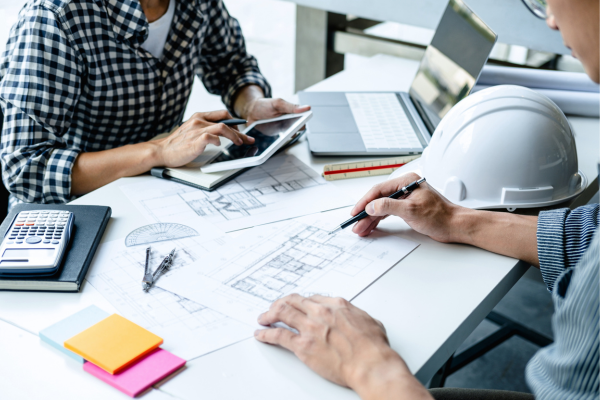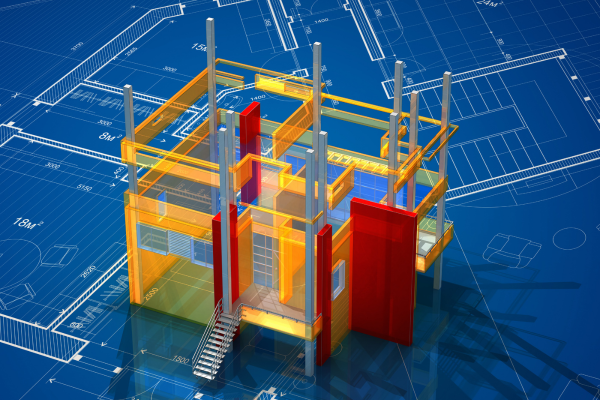
The Architectural Renaissance: Embracing BIM and AI Innovations
Imagine a world where buildings rise faster, greener, and smarter—all thanks to tech. Welcome to the architectural revolution! It's not just about bricks and steel anymore; it's about bits and bytes reshaping our skylines. Building Information Modeling (BIM) and Artificial Intelligence (AI) are the new architects on the block, turning dreams into blueprints and blueprints into realities, faster and more efficiently than ever before.
With BIM, we're crafting digital worlds before laying a single brick, catching problems before they happen. It's like having a crystal ball, but for construction. And AI? It's bringing creativity and smarts, designing spaces that adapt to us, the weather, and even the economy. Together, they're not just changing the game; they're making a whole new one.
This isn't just about the future of buildings; it's about the future of living and working in them. From towering skyscrapers that breathe to cozy homes that adjust to your mood, the possibilities are endless. So, buckle up! We're on a thrilling ride into the future of architecture, where technology and creativity meet to make the world not only a better place but a smarter one, too.
Picture this: long ago, architects and builders sketched dreams on paper, turning them into towering structures. Then came Building Information Modeling (BIM), revolutionizing everything. Imagine creating buildings in a virtual world before even breaking ground. That’s BIM for you—it’s like playing a super-advanced video game, where every level you beat makes a building smarter, faster to build, and easier to manage.
With BIM, we've moved from simple sketches to dynamic 3D models. These models aren't just pretty pictures; they're packed with info like how much materials will cost and how buildings will stand up to Mother Nature. It’s a big leap from the old days of rulers and pencils. Now, architects, engineers, and construction folks can all work together in this digital playground, spotting problems early and finding the best ways to solve them.
The beauty of BIM doesn’t stop at planning. It stretches its digital arms into the future, guiding buildings through their entire life. Need to replace a part? Check the model. Want to make a space more energy-efficient? The model's got you covered. It's sustainability’s best friend, helping make greener buildings by design, not by accident.

Adoption of BIM has skyrocketed, transforming from a neat trick to a must-have in the architect's toolkit. It’s not just about keeping up with the tech; it’s about building smarter for a better tomorrow. Big firms, small studios, and everyone in between are getting on the BIM bandwagon, drawn by the promise of fewer mistakes, lower costs, and buildings that are as good for the planet as they are for people living and working in them.
So, what started as a ripple in the architecture world has turned into a tidal wave of innovation, thanks to BIM. It’s not just changing how we build; it’s changing what we build, ushering in a new era of smarter, sustainable architecture. Welcome to the revolution.
AI in architecture feels like having a super-smart friend who knows a ton about building things. This friend doesn’t just help you design cooler looking buildings; it makes them smarter, greener, and more in tune with what people actually need.
Here’s the scoop: AI can sift through mountains of data in the blink of an eye, helping architects dream up buildings that do more with less. It looks at how the sun hits a building, how people move through spaces, and even how to save energy. Then, it helps whip up designs that might seem out of this world but are totally doable.
But AI isn’t just about making things look futuristic. It’s also a problem-solver. Got a tight spot in a city? AI can figure out how to fit a building there. Worried about making a building eco-friendly? AI’s on it, finding ways to use less water and power. It’s like a magic wand for making buildings better for the planet.
And here’s the really cool part: AI keeps learning. Every project feeds it more info, making it even smarter for the next one. It’s not just about using tech for the sake of tech; it’s about making buildings that better fit our world.
So, as we look to the future, AI isn’t just a tool; it’s a game changer, making the impossible possible and helping us build a world that’s a little more thoughtful, a little greener, and a lot more exciting.
Building the future isn’t just about making things look cool; it’s about making them kinder to our planet. Enter sustainable and smart architecture, where buildings aren’t just structures—they’re part of the ecosystem. Thanks to advancements like BIM and AI, architects are now like eco-warriors, armed with tech to design spaces that give back to the environment as much as they take.
Sustainable architecture means thinking about how buildings can use less water, power, and materials. It's about choosing wood from forests that keep growing and paint that doesn’t make the air dirty. Smart architecture goes a step further, using gadgets and tech to manage these resources in real time. Imagine a building that knows when to let sunlight in to keep you warm, or one that collects rainwater for flushing toilets. That’s not just smart; it’s genius.
These aren’t just dreams. They’re real, thanks to the data and simulation powers of BIM and the predictive might of AI. These tools let architects experiment in digital worlds before making a single real-world decision, ensuring every building is as green as it can be. And as these buildings rise, they become living labs, teaching us more about sustainability and smart tech.
But it’s more than just saving on bills or using less water. It’s about creating spaces where people feel healthier, happier, and more connected to the world around them. As buildings breathe, manage light, and even generate their own energy, they’re not just places to live and work; they’re active players in our fight against climate change.
This shift towards sustainable and smart architecture isn’t just a trend; it’s a movement. It’s architects, engineers, and citizens coming together to build a future where technology and nature walk hand in hand. And as we look ahead, it’s clear: the future of architecture isn’t just about building up; it’s about thinking forward.

Imagine stepping into a city where buildings heal the planet and spaces adapt to your needs like magic. That’s the future landscape of architecture we’re heading towards. It’s a place where digital twins, tiny digital copies of buildings and cities, help us understand and manage spaces in real time. Think of it as having a video game version of a city that helps make the real one better.
In this future, the Internet of Things (IoT) turns buildings into smart hubs that talk to your phone, your car, and even your coffee maker. Buildings will know when to save energy, when to light up, and how to keep you comfy without you saying a word. And with AI, they’ll learn and get better at this over time.
Virtual and augmented reality will let us walk through spaces before they’re even built, making sure every nook and cranny is just right. This isn’t just about making life easier; it’s about making it better, with buildings that consume less and give more to the earth.
This vision of architecture is about more than just buildings; it’s about creating a world where technology and nature work hand in hand, crafting spaces that care for us and the planet. It’s ambitious, sure. But with the tools and tech we’re building today, this future is right around the corner. Welcome to a world where architecture thinks and breathes, just like us.
As we stand on the brink of a new era in architecture, it’s clear that embracing technological change isn’t just an option—it’s a necessity. The journey through BIM, AI, sustainable innovations, and smart technologies has shown us a future where architecture does more than just provide shelter. It offers solutions to environmental challenges, adapts to our needs in real time, and creates spaces that are not only efficient but truly alive. This isn’t a distant dream; it’s a reality being built today, brick by digital brick. So, let’s lean into this change, exploring the vast potential of technology to shape a world where buildings breathe, think, and care for the planet as much as we do. The future of architecture is here, and it’s time to build it together.